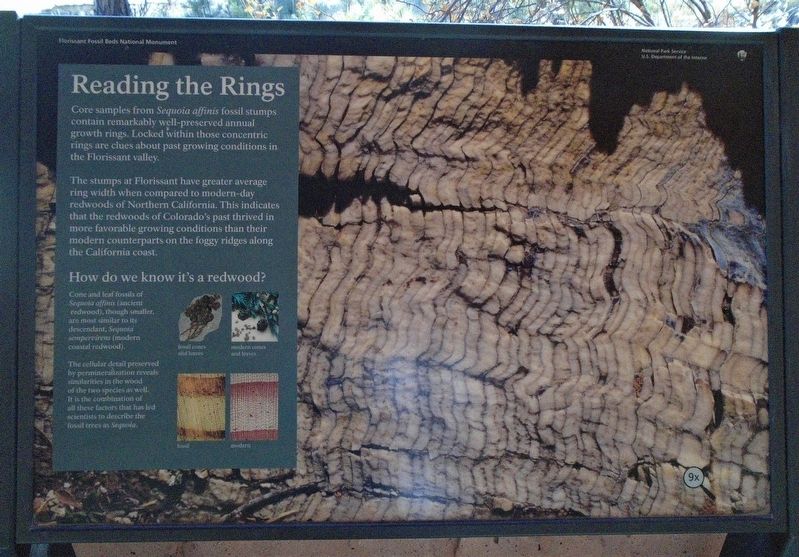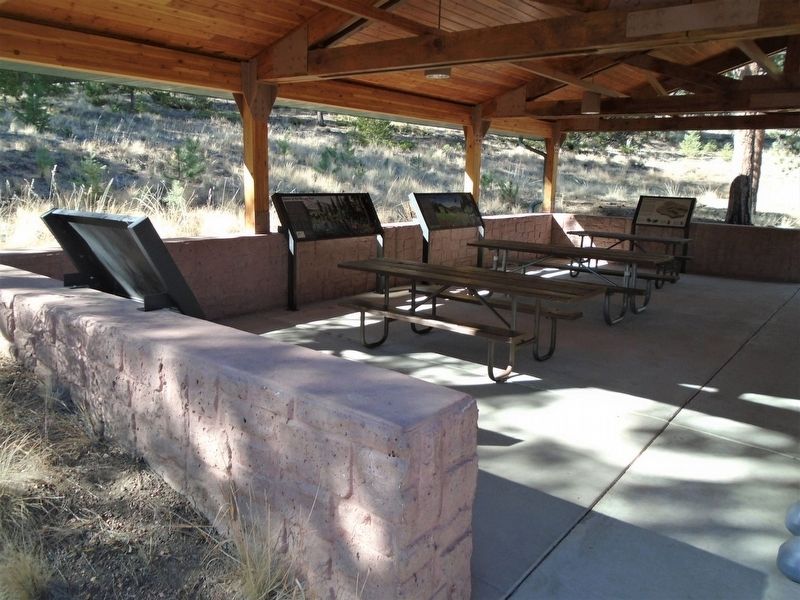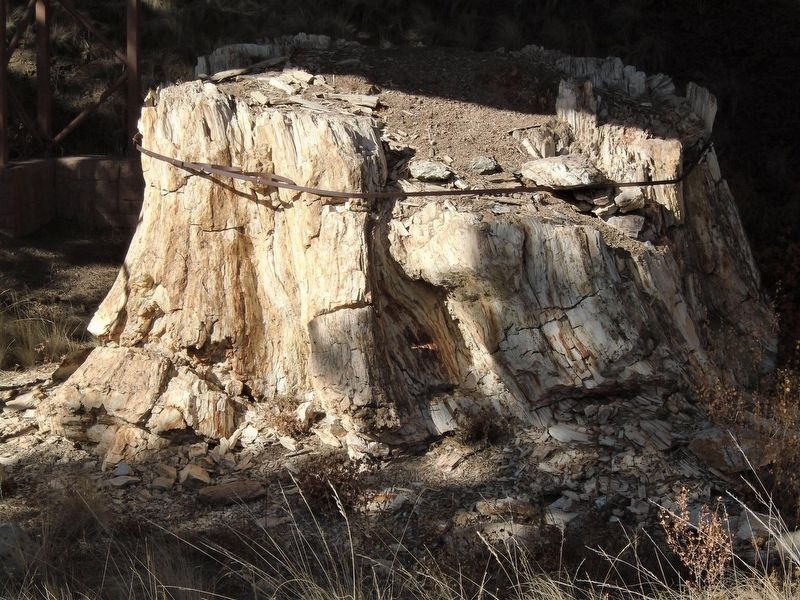Reading the Rings
Core samples from Sequoia affinis fossil stumps contain remarkably well-preserved annual growth rings. Locked within those concentric rings are clues about past growing conditions in the Florissant valley.
The stumps at Florissant have greater average ring width when compared to modern-day redwoods of Northern California. This indicates that the redwoods of Colorado's past thrived in more favorable growing conditions than their modern counterparts on the foggy ridges along the California coast.
How do we know it's a redwood?
Cone and leaf fossils of Sequoia affinis (ancient redwood), though smaller, are most similar to its descendant, Sequoia sempervirens (modern coastal redwood).
The cellular detail preserved by permineralization reveals similarities in the wood. It is the combination of all these factors that has led scientists to describe the fossil trees as Sequoia.
Erected by National Park Service.
Topics. This historical marker is listed in these topic lists: Environment • Paleontology • Parks & Recreational Areas • Science & Medicine.
Location. 38° 54.806′ N, 105° 17.181′ W. Marker is near Florissant, Colorado, in
Other nearby markers. At least 8 other markers are within walking distance of this marker. Dawn of the Recent Past (here, next to this marker); Florissant Valley Today (here, next to this marker); Ancient Clones (a few steps from this marker); Delicate Impressions (a few steps from this marker); Layers of Time (a few steps from this marker); Is the Trio in Trouble? (a few steps from this marker); Just One Piece at a Time (a few steps from this marker); Stumps of Stone (within shouting distance of this marker). Touch for a list and map of all markers in Florissant.
Also see . . .
1. Florissant Fossil Beds National Monument. (Submitted on October 22, 2020, by William Fischer, Jr. of Scranton, Pennsylvania.)
2. Conservation assessment and experimental mechanical pinning treatment of petrified sequoia affinis.
Credits. This page was last revised on October 22, 2020. It was originally submitted on October 22, 2020, by William Fischer, Jr. of Scranton, Pennsylvania. This page has been viewed 105 times since then and 7 times this year. Photos: 1, 2, 3. submitted on October 22, 2020, by William Fischer, Jr. of Scranton, Pennsylvania.


